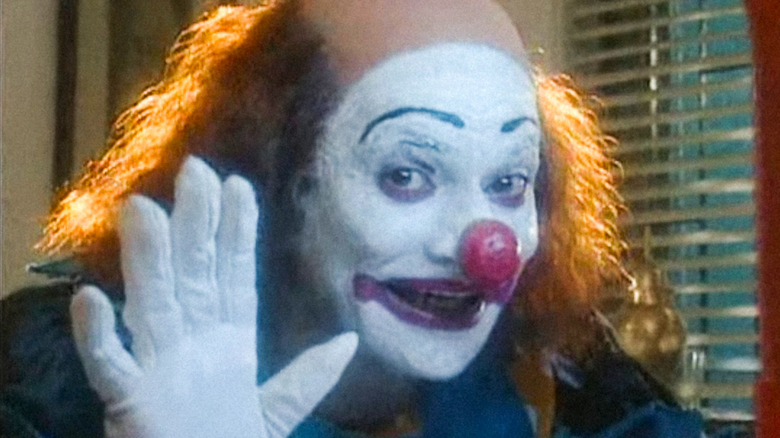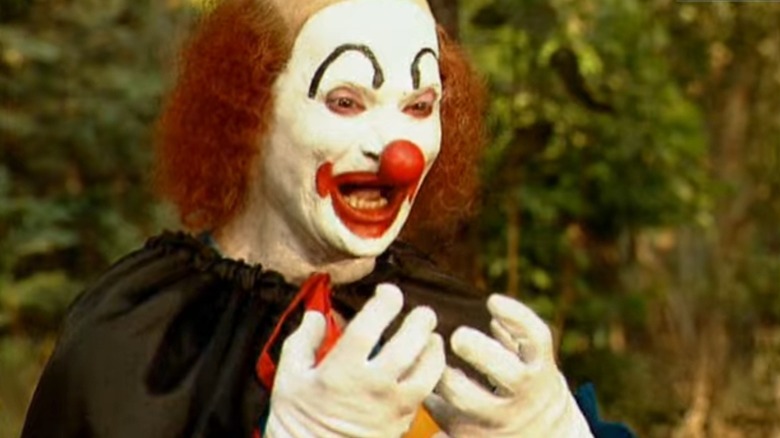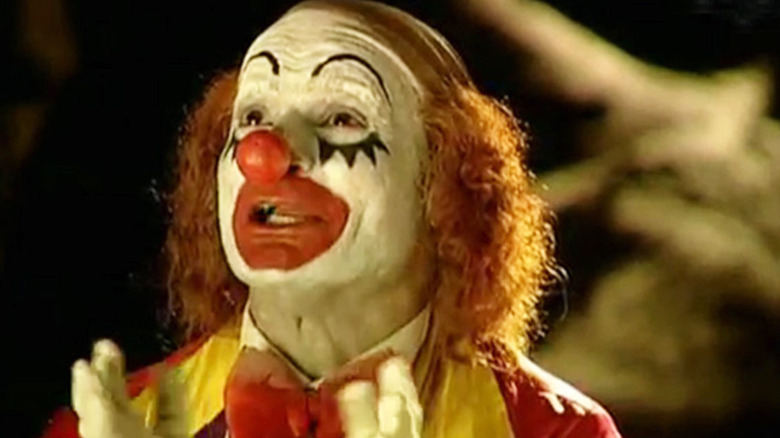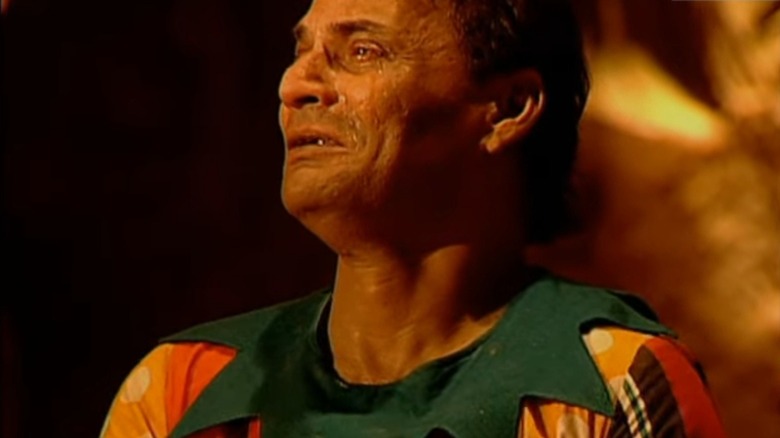Stephen King's It Was Once Adapted As A 52-Episode TV Series – In India
Stephen King's massive horror epic "It" is a 1138-page monstrosity about a shapeshifting, sewer-dwelling clown that tortures and eats children. The novel is set partly in 1957 and follows a group of seven children who become fast friends after discovering that they are all being tormented by the sewer clown, sometimes called Pennywise, but mostly just called ... It. They also reveal that they are all suffering from varying forms of abuse, and each has a bully or abuser they must confront ... or kowtow to. The children end up defeating the monster, but not entirely. It returns to Derry, Maine, when the seven main characters are adults, forcing them to relive the battle once again.
The novel was an enormous hit, and four years after its publication, director Tommy Lee Wallace ("Halloween III: Season of the Witch," "Fright Night Part 2") adapted "It" into an acclaimed miniseries for ABC. Tim Curry played Pennywise the Clown, and Harry Anderson, John Ritter, and Annette O'Toole also appeared. Jonathan Brandis and Seth Green played two of the child characters. Because it was broadcast on network TV, the 192-minute "It" miniseries traumatized many kids in the audience.
Little needs to be said about the pair of "It" films that director Andy Muschietti made in 2017 and 2019, as they're among the highest-grossing horror movies ever made. Bill Skarsgård played Pennywise in that version, and together, the two films were 305 minutes long.
In between the 1990 miniseries and the 2017 film, however, was a TV adaptation of "It" that is not well-known in North America. It seems that the Indian broadcasting company Zee TV adapted "It" into a 52-episode, Hindi-language TV series that ran in 1998. It's called "Woh."
Woh
"Woh" transposes the action of King's novel from Derry to Panchgani, a small town near the west coast of India. The town is being haunted by an ancient evil that takes the form of a circus clown. The clown, called Woh, is played by celebrated actor Lilliput from the popular mythology-based TV series "Vikram Vetaal," which he also wrote. Just like in King's novel, Woh is stalking a core group of seven young characters — although in this version, they are teenagers. Also like King's novel, they defeat the evil but swear to reunite as adults, should it ever return. Naturally, the evil returns.
The Hindi word "woh" translates as "it," but is also a gender-neutral term, so the title could also be "he" or "she."
Episodes of "Woh" can be found online, and it's streaming on the Indian streaming service Movies and TV, although the service is only available in India. Resourceful internet denizens can likely find the series online by other means, but there are no subtitled editions currently available in North America. One will have to speak Hindi to understand.
As Woh, Lilliput may be just as terrifying as Tim Curry. Because of the show's low budget, Woh was not realized using elaborate special effects or makeup prosthetics. This meant that Woh looked like a real person, albeit one that could mysteriously appear and vanish at will. His spite and hate of the children of Panchgani felt more like the desperate rancor of a psychotic person than the dark natural impulses of a killer monster. Lilliput's grounded qualities make Woh that much more terrifying. He appears in people's homes, by the side of the road, always unexpectedly, shaking a plastic noisemaker and happy to terrify children and adults alike.
The new ending
"Woh," perhaps wisely, changes the ending of King's novel. King has long been notorious for his inability to finish stories in a satisfactory manner, a fact that King himself had commented on; the author appeared in the 2019 film "It: Chapter Two" merely to confront the King-analogue character about his inability to finish stories. Everyone who has read "It" will likely tell you about the let-down climax, as well as an unsavory orgy sequence that, to this day, doesn't make any sense.
It's also explained — quite bafflingly — that Pennywise the Clown was an ancient alien from deep space that settled on Earth millions of years ago. It feeds on fear, is psychic, and hibernates for a few decades at a stretch. It only recently took the form of a clown, and ordinarily looks like a massive spider. This, many might agree, is stupid. "Woh" has no orgy sequence, and introduces a newer, better origin for Woh.
In "Woh," the adults reunite after 15 years to confront the demonic clown a second time. However, the story doesn't end there. The characters all go on their merry way: falling in love, marrying, and having children. Fast-forward seven years, and one of the character's sons is now displaying unusual, evil, Woh-like qualities. It seems that the spirit of Woh has returned to take demonic possession of him. This plot wrinkle highlights the intergenerational nature of King's original story.
But wait, there's more.
The better ending
The adults investigate the young boy's possession, and find that Woh was not an ancient space deity; he was born on Earth. Woh had a mother who reveals that he was once a human named Vikram who was bullied incessantly for his height and appearance (Lilliput is three feet and five inches tall). Because of this incessant bullying, Vikram took his own life. He then returned — Freddy Krueger style — as a vengeful ghost, eager to torment the denizens of the small town that wronged him.
Vikram appears as a ghost and explains his story to the adults who murdered him. He breaks down in tears, weeping for the tragedy of his life. The adults show him sympathy, finally understanding the human behind the clown. Vikram releases the child he was possessing and passes into the afterlife, presumably at peace.
This is a far better ending than King's novel, as well as the ending of the 2019 "It" feature film. In that movie, the adult characters corner Pennywise the Clown and bully him, using his primary fear-inducing tactic against him. In "It," the clown represented the hidden evils of 1950s America, emerging as a symbol of domestic abuse and schoolyard torment. In "Woh," the clown was born of social wrongs. He was an instrument of righteous vengeance, driven mad and depressed by a world that rejected him. He was not an "other." Woh was one of us.
The symbolism is quite different, but dramatically, this ending is way more satisfying.
Flex your resourcefulness, brush up on your Hindi, and seek it out.



